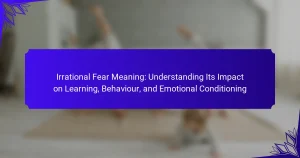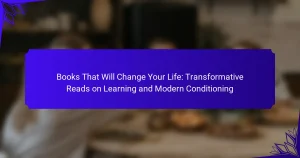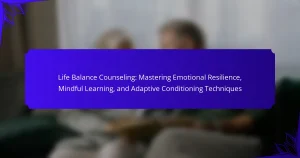In a diverse modern world, embracing universal religion fosters personal growth and unity through shared values. This article explores the integration of cultural teachings, the significance of experiential learning, and the role of community support. It examines unique attributes of learning and conditioning that enhance adaptability, the impact of technology on education, and best practices for overcoming challenges in diverse environments. By focusing on these elements, individuals can thrive in an ever-evolving landscape.
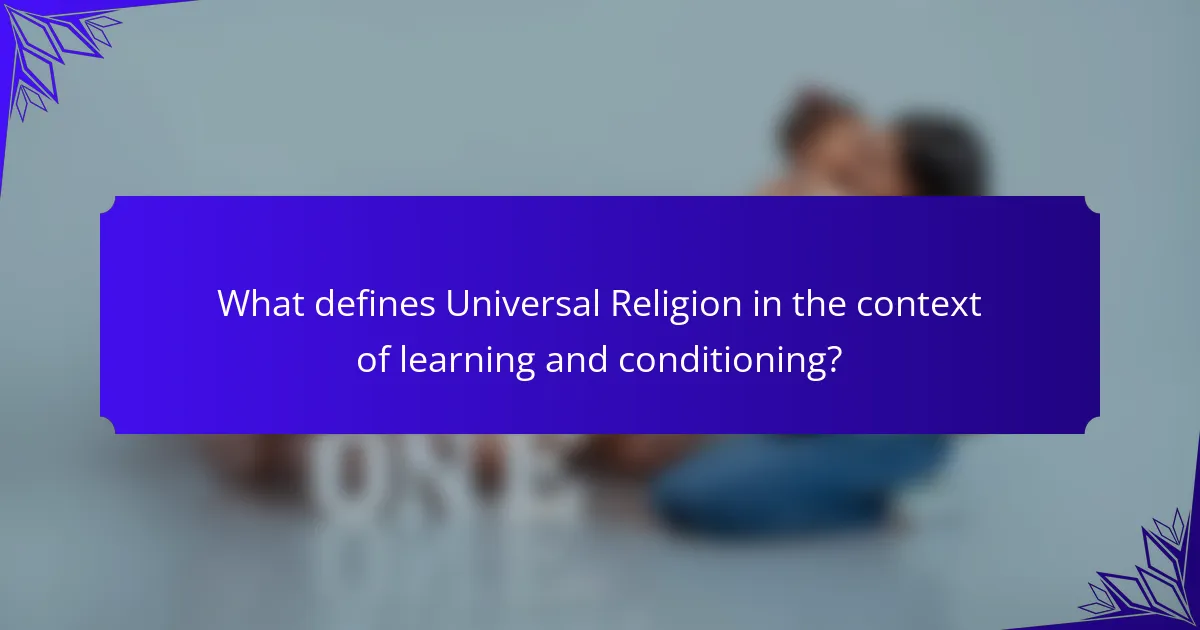
What defines Universal Religion in the context of learning and conditioning?
Universal religion in the context of learning and conditioning emphasizes adaptability and inclusivity. It encourages individuals to embrace diverse perspectives while fostering personal growth through shared values. This approach enhances understanding and promotes unity in a complex world. Key attributes include the integration of various cultural teachings, the importance of experiential learning, and the role of community support in individual development.
How does learning manifest in diverse belief systems?
Learning manifests in diverse belief systems through shared values, cultural practices, and adaptive teachings. Universal religion encourages exploration of various perspectives, fostering understanding and respect. For instance, many belief systems emphasize compassion and community, promoting collective growth. Additionally, adaptive learning methods integrate modern knowledge with traditional wisdom, enhancing relevance in contemporary society. This synthesis of ideas supports a more inclusive worldview, allowing individuals to navigate complexity while embracing diversity.
In what ways do conditioning practices vary across cultures?
Conditioning practices vary significantly across cultures due to differing beliefs, values, and social structures. For instance, collectivist cultures often emphasize community-based conditioning, while individualistic cultures focus on personal achievement. The methods of teaching and reinforcement also differ, with some cultures favouring oral traditions and others prioritising written instruction. Additionally, the role of authority figures in conditioning practices can vary, influencing the learning environment and outcomes. This diversity highlights the unique attributes of each culture’s approach to learning and adaptation.

What are the universal attributes of learning and conditioning?
Learning and conditioning share universal attributes that facilitate adaptation and growth. Key attributes include reinforcement, feedback, generalization, and transfer of knowledge. Reinforcement strengthens behaviours, while feedback provides information for improvement. Generalization allows learned behaviours to apply across different contexts, and transfer of knowledge enables skills to be utilized in new situations. These attributes collectively enhance the learning experience in diverse environments.
How do shared learning principles foster understanding?
Shared learning principles enhance understanding by promoting collaboration, fostering empathy, and encouraging diverse perspectives. These principles create an environment where individuals learn from each other, adapting their knowledge to different contexts. As a result, learners develop a deeper comprehension of complex ideas and cultural nuances, which is essential in a diverse modern world. By embracing shared learning, participants cultivate critical thinking and adaptability, essential attributes for navigating today’s interconnected society.
What common conditioning techniques are used globally?
Common conditioning techniques used globally include classical conditioning, operant conditioning, and observational learning. These methods shape behaviour through associations, reinforcement, and modelling.
Classical conditioning involves pairing a neutral stimulus with an unconditioned stimulus to elicit a conditioned response. Operant conditioning uses rewards and punishments to influence behaviour. Observational learning occurs when individuals learn by watching others, emphasizing the role of social context in behaviour modification.
These techniques are integral in various fields, including education, therapy, and behavioural training, demonstrating their universal applicability in diverse cultural settings.
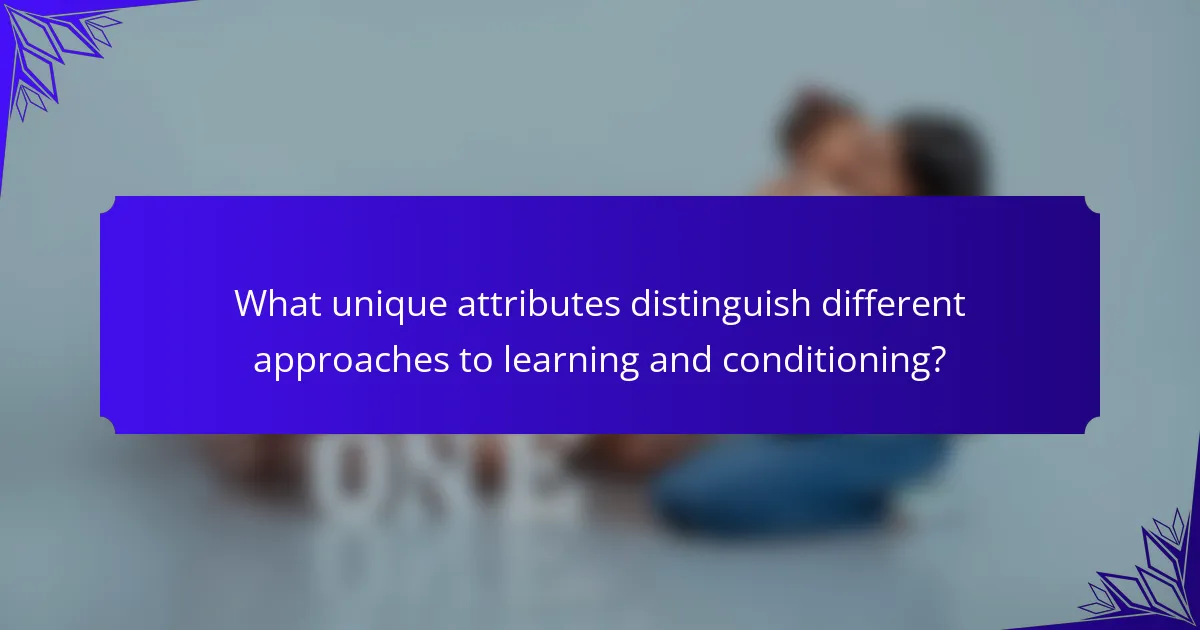
What unique attributes distinguish different approaches to learning and conditioning?
Different approaches to learning and conditioning are distinguished by their unique attributes such as methodology, adaptability, and cultural relevance. Methodology includes techniques like experiential learning versus traditional instruction. Adaptability refers to how well an approach can be modified to fit individual needs. Cultural relevance highlights how specific methods resonate with diverse backgrounds, enhancing engagement and effectiveness. These unique attributes contribute to the overall effectiveness of learning in a universal context.
How do local beliefs shape specific learning methodologies?
Local beliefs significantly influence specific learning methodologies by shaping cultural values and teaching approaches. These beliefs can determine the relevance of content, preferred learning styles, and the integration of community practices. For instance, collectivist cultures may emphasize collaborative learning, while individualistic societies might focus on personal achievement. This alignment fosters deeper engagement and retention of knowledge, making education more effective. Understanding these dynamics allows educators to adapt methodologies to fit local contexts, enhancing overall learning outcomes.
What unique conditioning practices are found in specific cultures?
Unique conditioning practices in specific cultures emphasize diverse methods of learning and adaptation. For instance, the Maori culture utilizes storytelling as a primary conditioning tool, fostering communal values and identity. In contrast, the Japanese practice of “Shu-Ha-Ri” outlines a three-stage approach to mastery in various disciplines, promoting structured learning and adaptation. Additionally, the Indigenous Australian practice of “Songlines” incorporates navigation and cultural knowledge through song, reinforcing connection to land and heritage. These practices illustrate how unique cultural contexts shape conditioning methods, enhancing learning and adaptation in a globalized world.
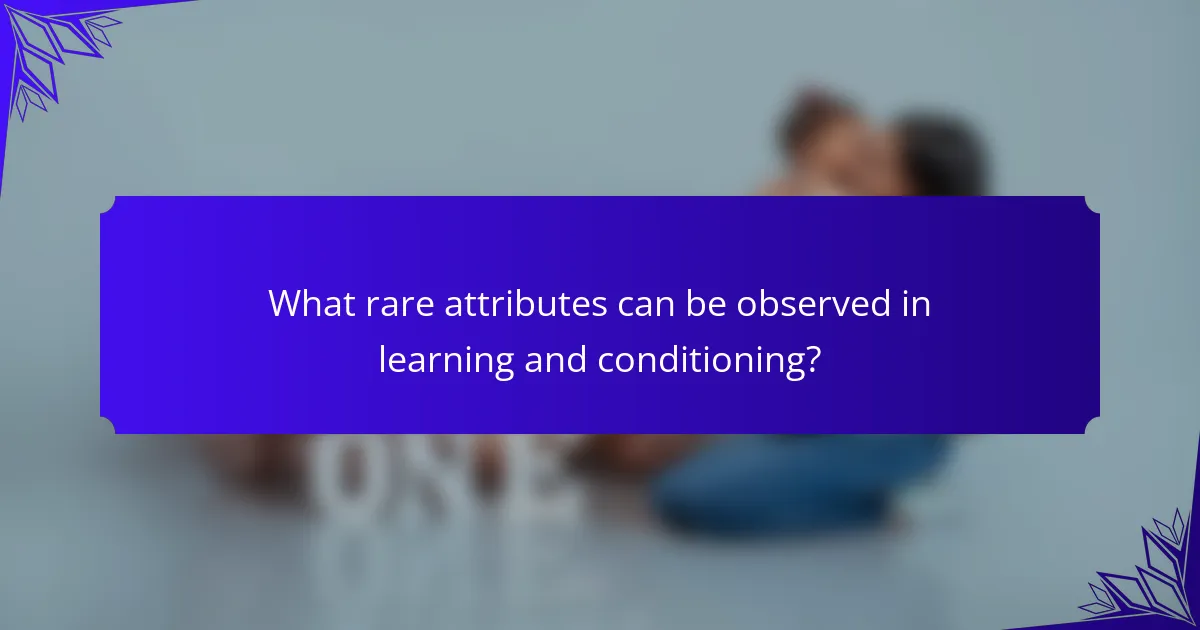
What rare attributes can be observed in learning and conditioning?
Rare attributes in learning and conditioning include unique adaptability to diverse environments, innovative problem-solving approaches, and the capacity for self-directed learning. These attributes enhance the ability to embrace change and foster resilience in a rapidly evolving world. They highlight the importance of flexibility and creativity in the learning process, allowing individuals to thrive in various contexts.
What uncommon methods have emerged in modern educational systems?
Modern educational systems are increasingly embracing unconventional methods that prioritize adaptability and diverse learning experiences. These methods include project-based learning, which fosters collaboration and real-world problem-solving, and experiential learning, where students engage directly with their environment. Additionally, technology integration, such as virtual reality and gamification, enhances engagement and retention. These approaches reflect a unique attribute of contemporary education: the focus on holistic development rather than rote memorization. As a result, students are better prepared for a dynamic and interconnected world.
How do unconventional conditioning techniques impact personal development?
Unconventional conditioning techniques significantly enhance personal development by fostering adaptability and resilience. These methods encourage individuals to embrace diverse learning experiences, leading to a more holistic understanding of themselves and their environment. By challenging traditional conditioning, people cultivate unique attributes such as creativity and critical thinking, which are essential in navigating a complex modern world. As a result, personal growth becomes a dynamic process rooted in continuous learning and adaptation.
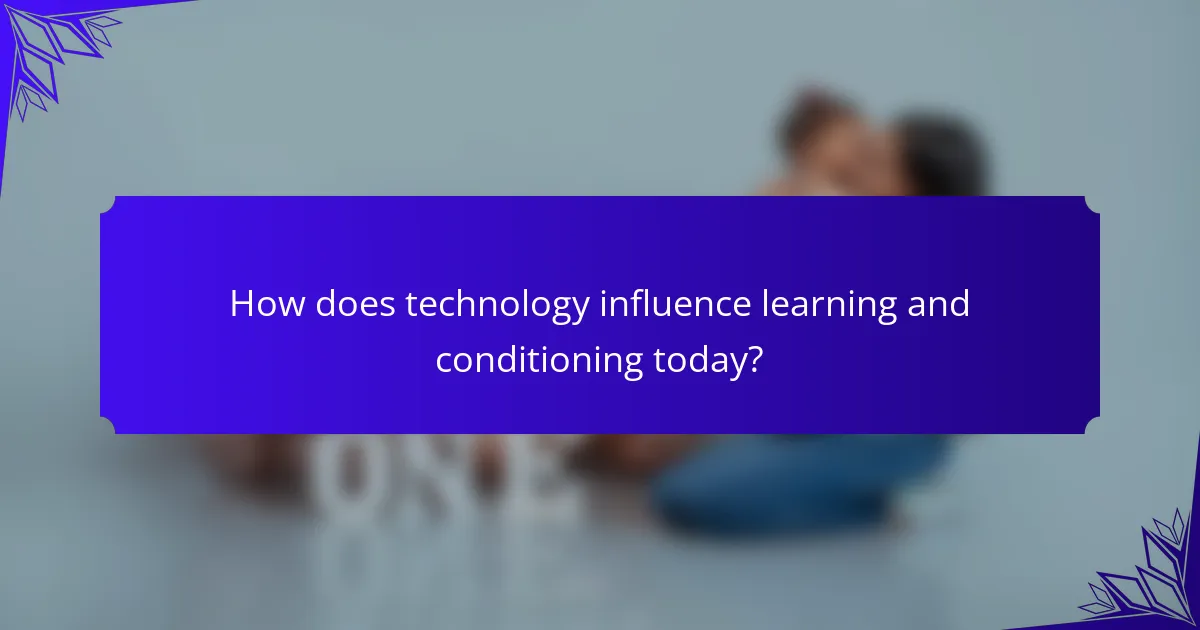
How does technology influence learning and conditioning today?
Technology profoundly influences learning and conditioning today by enhancing accessibility and personalization. Digital platforms offer diverse resources, enabling tailored educational experiences. For instance, adaptive learning technologies adjust content based on individual progress, fostering effective skill acquisition. Additionally, online collaboration tools promote peer interaction, enriching the learning process. The integration of artificial intelligence in education further personalizes learning paths, addressing unique student needs. Overall, technology empowers learners to adapt and thrive in a rapidly evolving world.
What role do online platforms play in modern education?
Online platforms significantly enhance modern education by providing accessible resources and facilitating interactive learning. They offer diverse tools for students and educators, promoting personalized learning experiences. For instance, platforms like MOOCs enable global access to high-quality courses, fostering a universal approach to education. This adaptability aligns with the principles of universal religion, emphasizing learning and conditioning in a diverse world. The integration of technology in education supports continuous adaptation, essential for meeting the evolving needs of learners.
How are AI and machine learning reshaping conditioning practices?
AI and machine learning are revolutionizing conditioning practices by enhancing personalization and efficiency. These technologies analyze vast data sets to tailor learning experiences, adapting to individual needs. As a result, conditioning methods become more effective, fostering deeper engagement and retention. Additionally, machine learning algorithms identify patterns in behaviour, enabling proactive adjustments in training approaches. This shift not only streamlines processes but also supports a more dynamic learning environment, crucial in a diverse modern world.
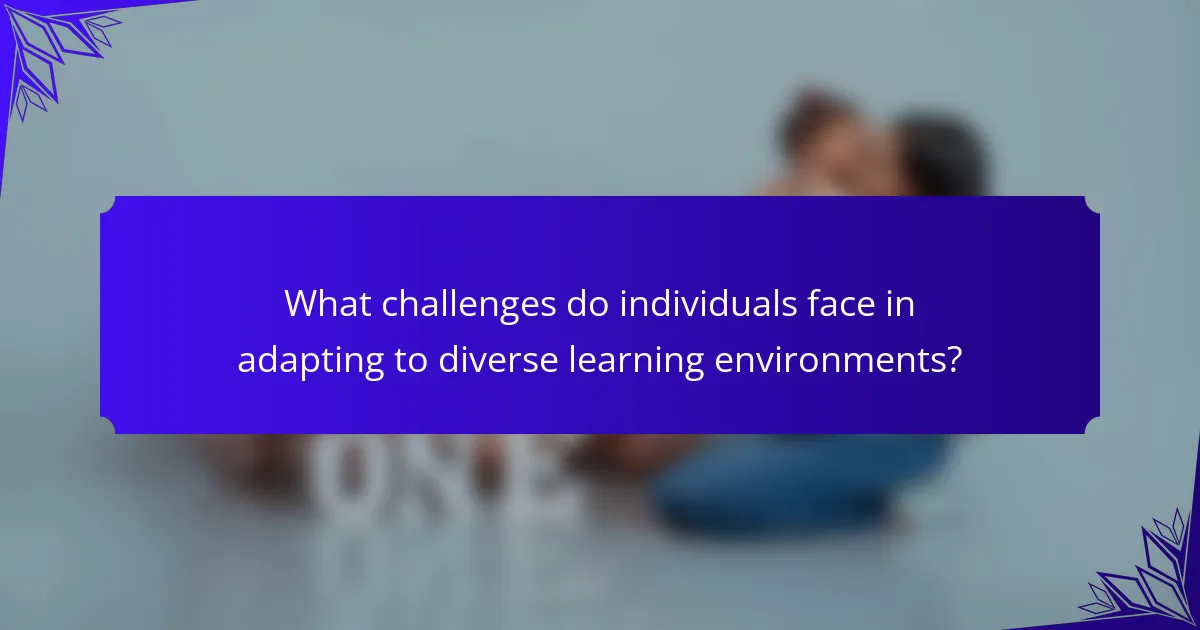
What challenges do individuals face in adapting to diverse learning environments?
Individuals face various challenges in adapting to diverse learning environments, including cultural differences, varying educational backgrounds, and differing communication styles. These factors can create barriers to effective collaboration and understanding. Additionally, the pace of technological change can overwhelm learners, complicating their ability to engage fully. The need for flexibility in learning approaches is crucial, as rigid structures may hinder adaptation. Embracing diversity in learning requires openness and a willingness to adjust one’s mindset and strategies.
How can cultural barriers hinder effective learning?
Cultural barriers can significantly hinder effective learning by creating misunderstandings and limiting communication. These barriers may include language differences, varying educational values, and distinct ways of interpreting information. As a result, learners may struggle to engage fully with the material, leading to decreased retention and application of knowledge. Recognizing and addressing these barriers is essential for fostering an inclusive learning environment that promotes adaptation and understanding across diverse cultural backgrounds.
What strategies can enhance adaptability in varied conditioning settings?
Adapting to varied conditioning settings requires a flexible mindset and strategic approaches. Emphasizing continuous learning, individuals can enhance their adaptability through diverse experiences and environments.
Engaging in cross-disciplinary training allows for a broader perspective, fostering innovative problem-solving skills. Incorporating feedback mechanisms ensures ongoing improvement and adjustment to new challenges.
Establishing a supportive community encourages sharing experiences and strategies, enhancing collective adaptability. Practicing mindfulness techniques can also improve emotional resilience, aiding in the navigation of changing circumstances.
These strategies create a robust framework for embracing learning and adaptation in a diverse modern world.
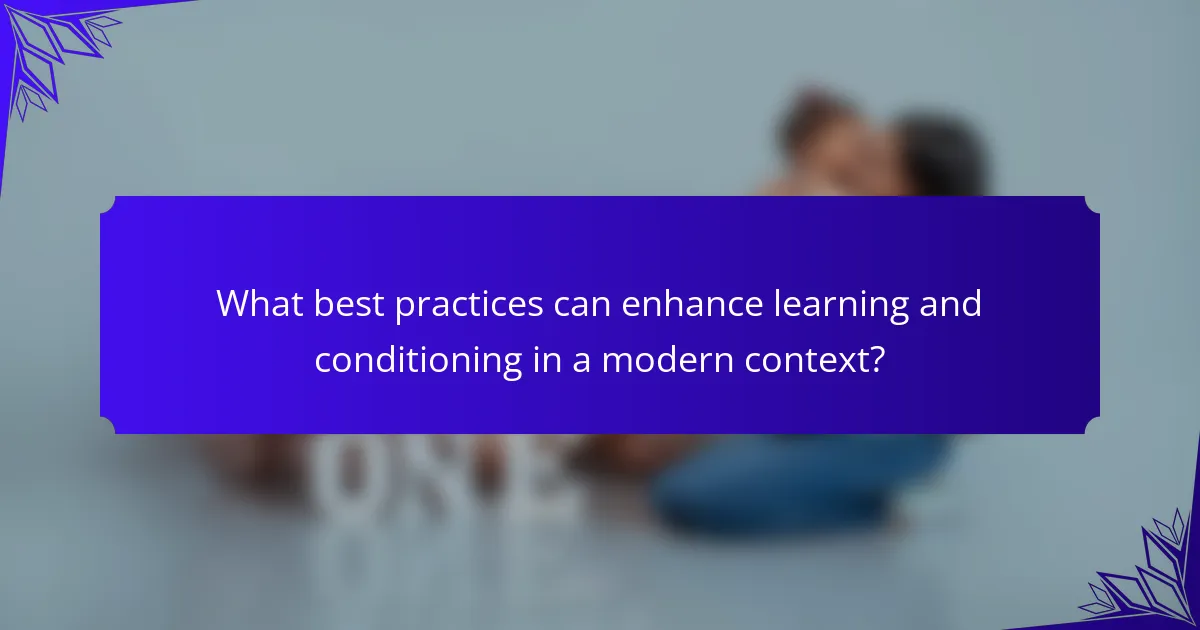
What best practices can enhance learning and conditioning in a modern context?
Adopting best practices enhances learning and conditioning by fostering adaptability and engagement. Incorporating diverse teaching methods, such as experiential learning and collaborative projects, promotes deeper understanding. Emphasizing emotional intelligence and cultural sensitivity improves the learning environment, catering to varied backgrounds. Regular feedback loops and assessments ensure continuous improvement and adaptation. Leveraging technology, like online platforms, facilitates access to resources and diverse perspectives, enriching the learning experience.
How can individuals optimize their learning experiences?
To optimize learning experiences, individuals should embrace diverse methods and adapt to new environments. Active engagement in various learning styles enhances retention and understanding. Utilizing technology, such as educational apps and online courses, provides flexibility and access to a wealth of resources. Collaborative learning through group discussions fosters a deeper comprehension of complex topics. Regular reflection on personal progress encourages continuous improvement and adaptation to evolving educational landscapes.
What common mistakes should be avoided in conditioning practices?
To avoid common mistakes in conditioning practices, focus on consistency, proper technique, and individualized approaches. Many practitioners overlook the importance of gradual progression, which can lead to injury or burnout. Neglecting recovery time is another frequent error, as adequate rest is essential for adaptation and performance improvement. Additionally, failing to set clear goals can result in a lack of direction and motivation. Lastly, disregarding the diversity of training methods may limit overall effectiveness, as varied stimuli can enhance conditioning outcomes.
What expert insights can guide effective adaptation strategies?
Expert insights for effective adaptation strategies highlight the importance of continuous learning and cultural sensitivity. Embracing diverse perspectives fosters resilience in a rapidly changing world. Strategies should include collaborative problem-solving, active listening, and flexibility in approaches. Research indicates that organizations with diverse teams are 35% more likely to outperform their competitors. Cultivating an adaptive mindset enables individuals and groups to navigate challenges effectively, ensuring sustainable growth and innovation.
